In the realm of hydraulic systems, efficiency and reliability are paramount. Hydraulic quick couplings, often referred to as quick connect couplers, play a critical role in ensuring these systems operate smoothly. Whether you’re dealing with heavy machinery, agricultural equipment, or industrial applications, understanding how hydraulic quick couplings work can significantly enhance system performance and maintenance. In this blog, we’ll delve into what hydraulic quick couplings are, how they function, and why they are indispensable in various hydraulic applications.
What is a Hydraulic Quick Coupling?
A hydraulic quick coupling is a connector or fitting used to join two hydraulic lines quickly and easily without the need for tools. These couplings are designed to enable the swift and secure connection and disconnection of hydraulic lines, facilitating the transfer of fluids such as oil or water within a hydraulic system. They are commonly used in applications where frequent connection and disconnection of lines are necessary, reducing downtime and improving operational efficiency.
Types of Hydraulic Quick Couplings
Hydraulic quick release couplings come in various designs, each suited for specific applications:
Push-to-Connect Couplings
These couplings connect by simply pushing the two halves together. They are easy to use and provide a secure connection, making them ideal for quick and frequent connections.
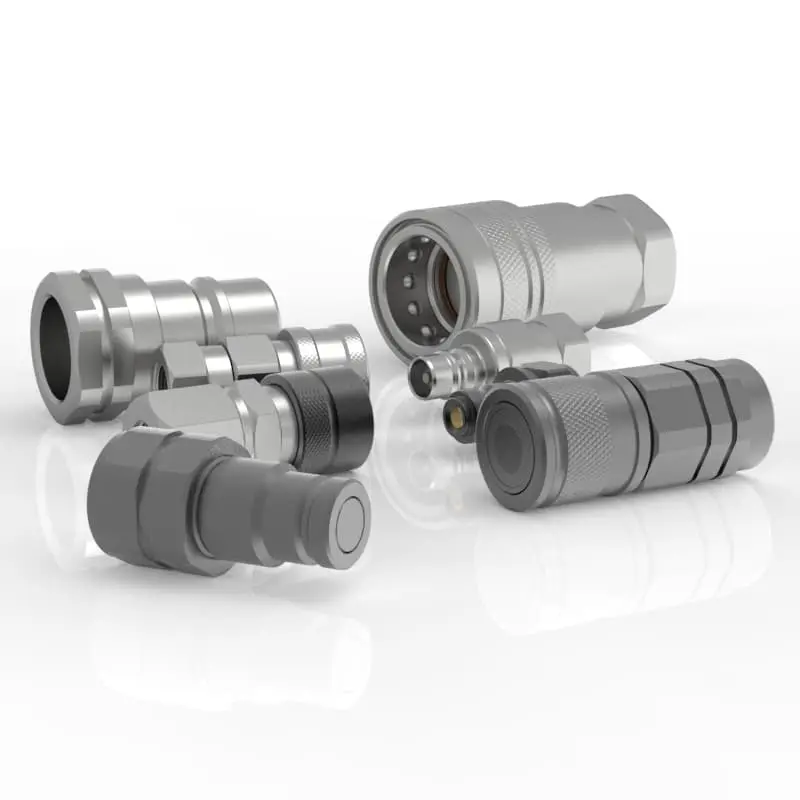
Threaded Couplings
Featuring a screw-thread mechanism, these couplings offer a more secure and leak-free connection, suitable for high-pressure applications.
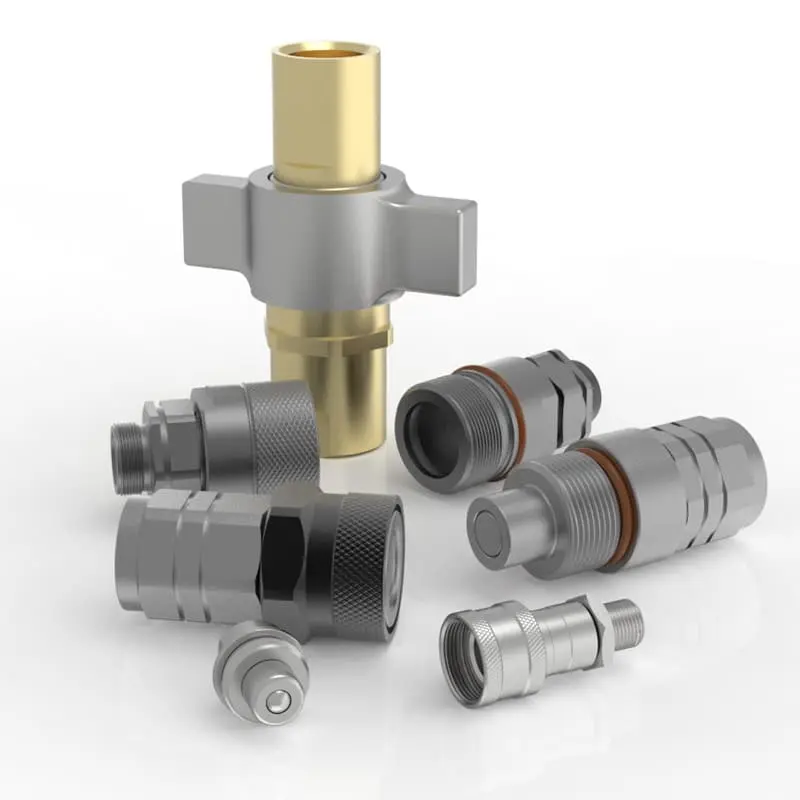
Flat-Face Couplings
Designed to minimize fluid loss during disconnection, flat-face couplings are often used in applications where cleanliness and environmental protection are crucial.
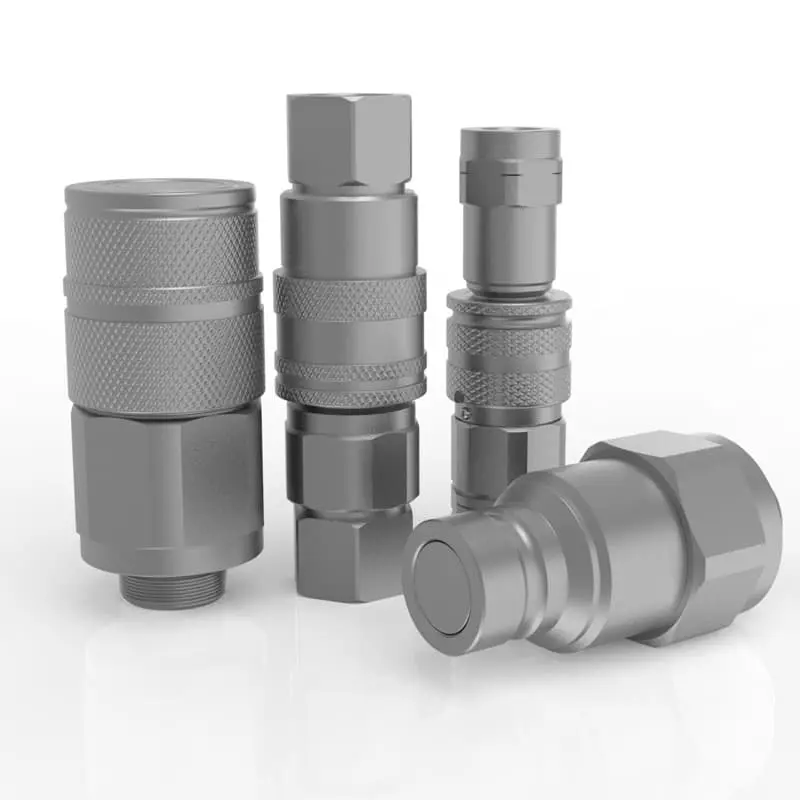
Ball-Lock Couplings
These couplings use a series of balls to lock the connection in place. They are known for their robustness and reliability in heavy-duty applications.
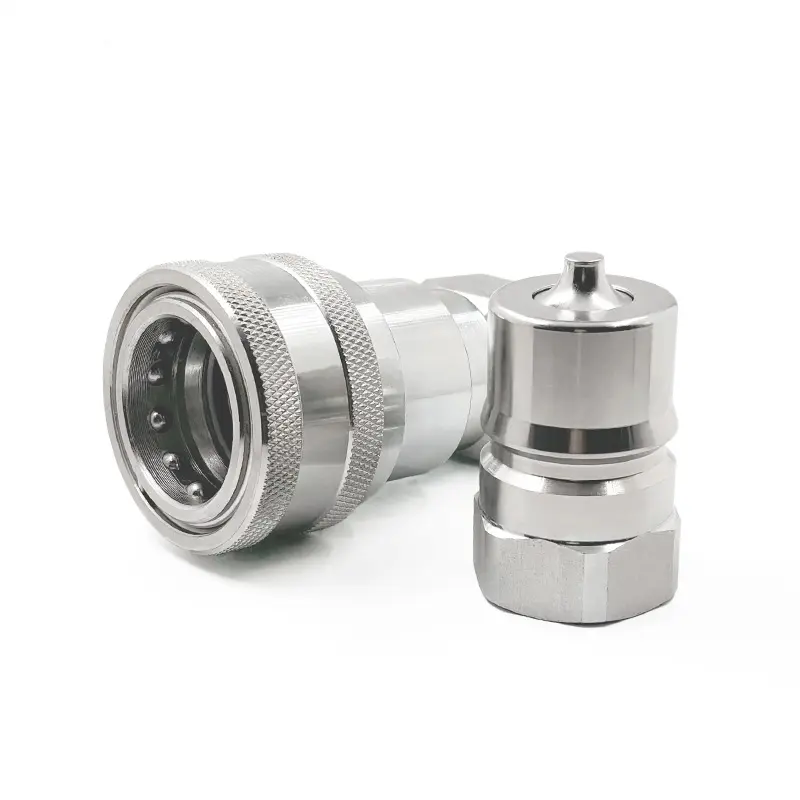
How Hydraulic Quick Couplings Work?
Hydraulic quick release couplings operate based on a simple yet effective mechanism. Here\’s a step-by-step breakdown of how they work:
Connection
To connect two hydraulic lines, align the male and female ends of the coupling. Depending on the type of coupling, you either push the ends together or screw them in place.
Locking Mechanism
Once connected, an internal locking mechanism, such as a ball-lock or a flat-face valve, engages to secure the connection. This ensures that the coupling remains firmly in place during operation.
Sealing
Hydraulic quick release couplings are designed with seals (such as O-rings) to prevent fluid leakage. These seals are critical in maintaining the integrity of the hydraulic system and ensuring efficient fluid transfer.
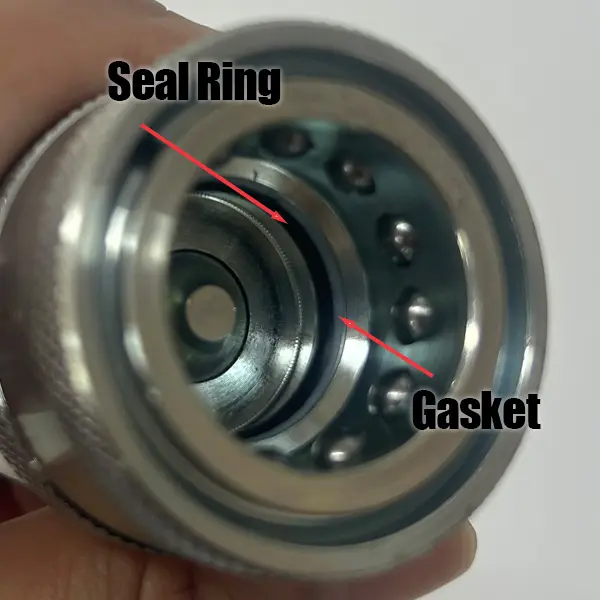
Disconnection
To disconnect, you typically pull back a release sleeve or unscrew the threaded coupling. This action disengages the locking mechanism, allowing the two halves to separate easily.
Benefits of Using Hydraulic Quick Couplings
Hydraulic quick release couplings offer several advantages that make them a preferred choice in many applications:
Efficiency
They allow for rapid connection and disconnection of hydraulic lines, significantly reducing downtime and improving productivity.
Versatility
Available in various designs and sizes, hydraulic quick couplings can be used in a wide range of applications, from low-pressure to high-pressure environments.
Leak Prevention
The secure locking and sealing mechanisms ensure that fluid leakage is minimized, maintaining system efficiency and cleanliness.
Safety
By facilitating easy and safe connections, hydraulic quick couplings help prevent accidents and injuries associated with manual fitting changes.
Applications of Hydraulic Quick Couplings
Hydraulic quick disconnect couplings are utilized across numerous industries, including:
- Construction: In heavy machinery such as excavators and loaders, quick couplings enable the swift interchange of hydraulic tools and attachments.
- Agriculture: Tractors and other agricultural equipment often use quick couplings to connect hydraulic implements, improving the efficiency of farming operations.
- Manufacturing: In industrial automation and machinery, quick couplings facilitate the rapid maintenance and replacement of hydraulic components.
- Transportation: Hydraulic systems in vehicles, such as dump trucks and cranes, rely on quick couplings for efficient fluid transfer and control.
Conclusion
Hydraulic quick couplings are an essential component in modern hydraulic systems, offering unparalleled convenience, reliability, and efficiency. By understanding how they work and their benefits, you can make informed decisions about their use in your applications. Whether you need to enhance productivity, reduce downtime, or ensure leak-free connections, hydraulic quick couplings are a valuable addition to any hydraulic system.


Leave a Reply